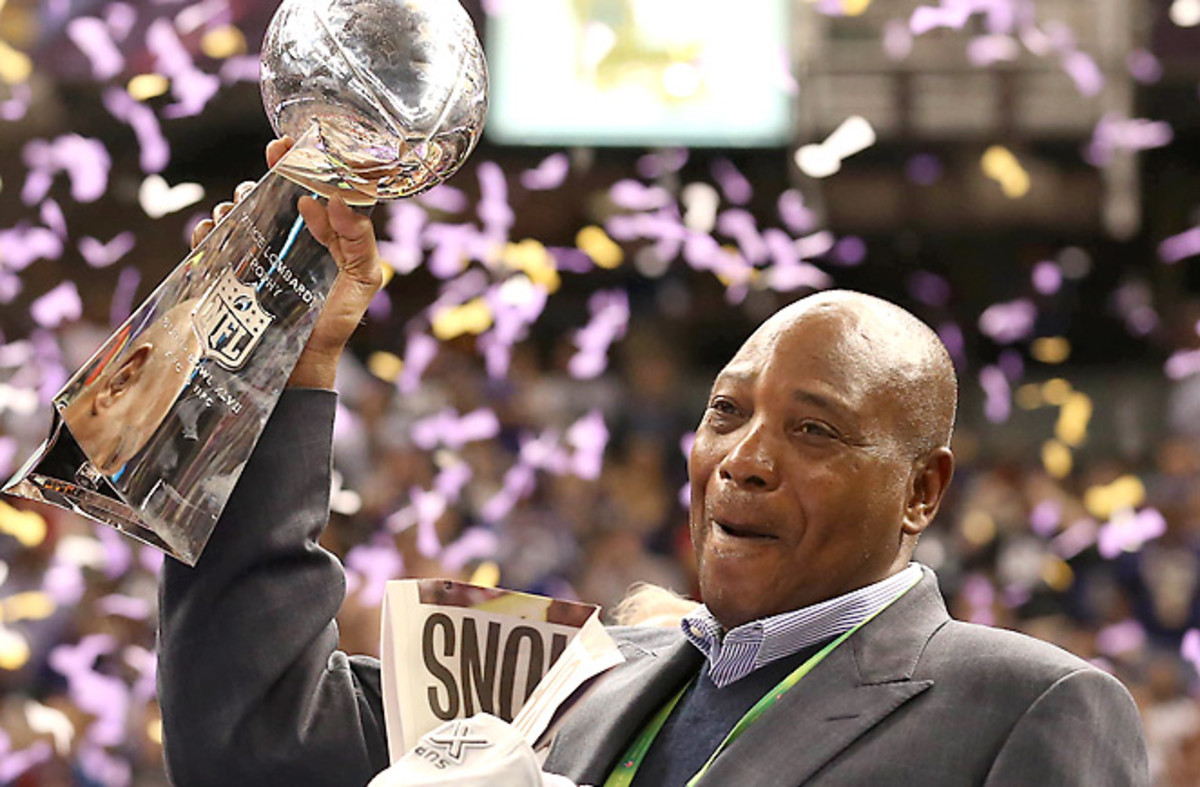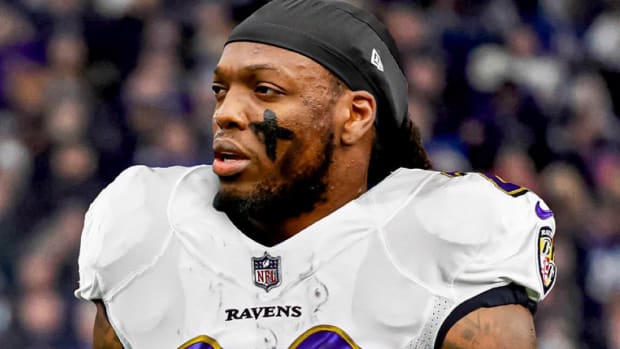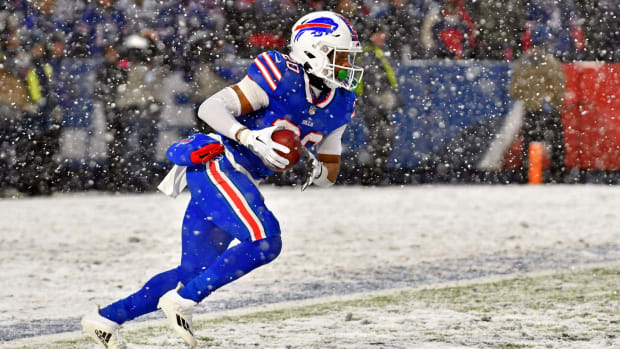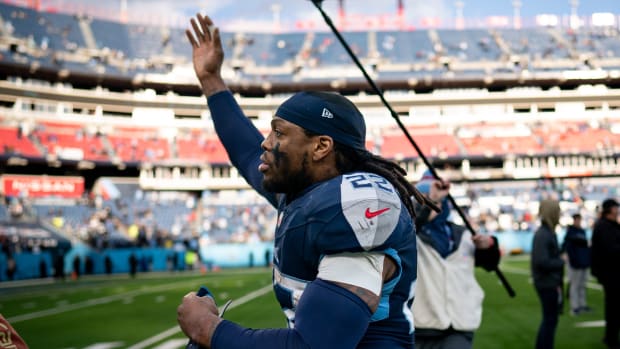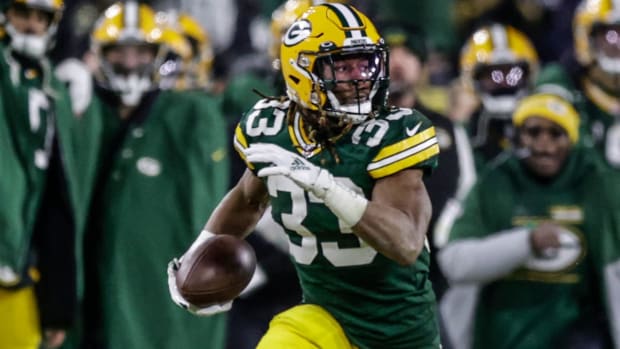Front Office Power Rankings: The NFL's best decision-makers

Ozzie Newsome and the Ravens have nine playoff trips and two Super Bowls in 17 seasons in Baltimore.
Matthew Emmons/USA Today
Perhaps it has gone a tad underappreciated, but the sea change in NFL front offices the past two years has been almost staggering. Veteran personnel decision-makers like Bill Polian, Jerry Angelo, Al Davis, A.J. Smith, Marty Hurney, Scott Pioli, Mike Tannenbaum and Billy Devaney are no longer running teams, while fresh faces like Chicago's Phil Emery, Indianapolis' Ryan Grigson, St. Louis' Les Snead, Oakland's Reggie McKenzie, Jacksonville's David Caldwell, Kansas City's John Dorsey, Tennessee's Ruston Webster, the Jets' John Idzik, San Diego's Tom Telesco, Carolina's David Gettleman, and Arizona's Steve Keim are getting their first opportunities as general managers.
Like never before, it's a new day in the NFL in terms of a new breed of club executives. All told, 15 of the league's 32 teams have undergone some sort of significant change in the front office flow chart just since the close of the 2011 season, and two other teams (Miami and Tampa Bay) fired head coaches but retained their GMs during that span, at least altering the top-level decision-making tandem that had been in place.
With so much rampant turnover, continuity is in short supply and roughly half the league's front offices are in the formative stages of compiling their track record of results. But that didn't stop us from attempting to power rank the 12 best front offices as free agency opens and the personnel acquisition season begins in earnest.
With so many new GM/head coaching combinations in place, identifying the most successful (and thus, stable) front offices is fairly straightforward, via the process of elimination. There are owners such as Jerry Jones and Mike Brown, who act as their own GMs in Dallas and Cincinnati, respectively, but other than those exceptions, the list of men who are long-time veterans at calling the personnel shots for their clubs is down to New England coach Bill Belichick and Baltimore GM Ozzie Newsome, with Pittsburgh's well-respected general manager Kevin Colbert being part of the collaborative decision-making process the Steelers are known for, and New Orleans GM Mickey Loomis sharing authority with head coach Sean Payton.
For the purposes of our NFL front office power rankings, we communicated with current club executives and veteran agents to get a cross section of opinion on the personnel work of those currently in power. Here's my take on the 12 best in the business, with assorted observations and insight:
12. New Orleans
I can make two very divergent cases when it comes to the Saints. First, there's the big picture view: Compare where the club is today compared to pre-2006, when GM Mickey Loomis and head coach Sean Payton first joined forces. There is no comparison. The franchise has enjoyed a playoff-run glory era, and won its first Super Bowl title, after the 2009 season. During that time, the Saints on the personnel front have been superb at discovering unsung talents like Marques Colston (seventh round) and Pierre Thomas (undrafted), and made their share of smart free-agent signings (see Drew Brees and Darren Sproles).
But there is another side to the story. They can't seem to fix their historically bad defense, first-round draft choices like Sedrick Ellis (2008), Patrick Robinson (2010) and Mark Ingram (2011) have lacked impact-player production, and the bottom line is that New Orleans has underachieved since winning the Super Bowl, with just one playoff victory in the past three seasons despite owning one of the game's three best quarterbacks. And then there's the whole bounty scandal, with both Loomis and Payton receiving league suspensions in 2012, which at least has to be accounted for in some respect. On balance, the Saints are a top 12 front office, but just barely, and teams like Cincinnati, Minnesota and St. Louis have done better work more recently.
11. Denver
The Broncos probably deserve inclusion on this list for last offseason's stellar quarterback work alone. Denver football czar John Elway was smart enough -- and tough-skinned enough -- to realize he had a wildly popular but limited starter in Tim Tebow, and he dared to set about upgrading the position in the face of a potential fan revolt. Actually, once the Broncos let it be known they were all-in on the Peyton Manning sweepstakes, most Denver fans forgot they ever knew what a Tebow was. And as it turns out, what a masterstroke it was, with Elway and the Broncos hitting all the right buttons in their smart and aggressive pursuit of No. 18.
As for the rest of the roster, it's a bit early to judge Elway's and head coach John Fox's track record. Sure, the Von Miller pick (No. 2 in 2011) was a beauty, but it was also a no-brainer. Miller had can't-miss written on his forehead. Two playoff trips in two years together speak volumes, but Elway and Fox didn't pick Ryan Clady, Elvis Dumervil, Demaryius Thomas or Eric Decker, or trade for Champ Bailey way back when. Those talents all came to Denver in the Josh McDaniels or Mike Shanahan eras. Elway and Co. are off to a strong start, and arguably Manning makes Super Bowl dreams possible, but most of the pieces were already in place. That can't be held against them, but it also should be mentioned as part of equation in the Mile High City.
10. Houston
After perennially playing the role of the NFL's biggest tease for a number of years, the Texans have established themselves as an upper tier franchise in the past two seasons, winning 22 regular season games and two more in the playoffs. And the front office headed by GM Rick Smith has had plenty to do with that ascension, drafting shrewdly, finding overlooked talent like running back Arian Foster in the collegiate free agent pool, and making the 2007 trade for quarterback Matt Schaub that helped set up the franchise's current playoff run.
Give the Texans high marks for knowing who they are and what they're after. Like most successful teams, they draft players that fit what they do, be it their 3-4 defense or their zone running scheme and blocking style. The draft has brought talents like J.J. Watt, Brooks Reed, Brian Cushing and Connor Barwin in recent years -- not to mention rookie quarterback T.J. Yates, who kept the team's 2011 playoff drive alive when Schaub and backup Matt Leinart went down -- and Smith has been unafraid to let stars like Mario Williams and DeMeco Ryans go once their value in the Texans' system peaked. Houston still doesn't have enough on offense to unseat the top powers in the AFC, but the Texans are built smartly and for the long haul, and their window should not close any time soon
9. Pittsburgh
As rules go, this one is easy to follow: Any franchise that has not endured consecutive playoff-less seasons since 1999-2000 deserves automatic inclusion among the top 12 best front office operations in the league. That's the neighborhood the Steelers have lived in the dozen years from 2001-2012 -- with five AFC title game trips and three Super Bowl berths in that span -- and that's why they start every season as a threat to win it all. Good coaching and a consistent approach by GM Kevin Colbert to the franchise's personnel philosophy are the hallmarks of the Steelers.
That said, the switch from Bruce Arians to Todd Haley at offensive coordinator didn't exactly pan out in 2012, and Pittsburgh seems to annually have salary cap issues that require contract restructuring and the eventual loss of some talented players. This year's expected departure of receiver Mike Wallace and the cap release of outside linebacker James Harrison are just two of the latest examples. Some within the league believe this will eventually catch up to Pittsburgh, and that a serious downturn is nearly inevitable. You can't re-do deals forever. Eventually the piper must be paid. Age and a salary squeeze might be closing in on the Steelers.
8. Indianapolis
There are those who believe the Colts have a lucky horseshoe lodged up their you-know-what. Need a quarterback? Well, you just take your medicine for a year and then go out and select a Peyton Manning or an Andrew Luck. That's how that works. At least in Indy. Granted, Luck was a bit of fortuity. But he wasn't the only piece the Colts and rookie general manager Grigson got right in 2012. Grigson's first draft was a grand slam on offense, with six legitimate contributors, including Luck, tight ends Dwayne Allen and Coby Fleener, receivers T.Y. Hilton and LaVon Brazill and running back Vick Ballard.
GALLERY: Biggest one-season turnarounds
After making the playoffs 11 times in the 14-season Bill Polian-Peyton Manning era, the Colts may keep the good times rolling for years to come with the Grigson-Luck tandem. Maybe the tougher schedule gets Indy in 2013, or maybe the Colts won't have the same Chuck Pagano-inspired motivation to draw on next season. But last year's 11-5 finish after the 2-14 debacle of 2011 was the story of the year in the NFL, and it wasn't so much a turnaround as it was the resumption of the natural order of things in Indianapolis. Somebody's doing something very right in the front office.
7. San Francisco
It's hard to overestimate the instant impact of the two-year Jim Harbaugh coaching era in San Francisco, but the reality is he has brought forth production from a cupboard that was pretty well-stocked when he got there. The 49ers">49ers have an embarrassment of riches in some ways -- there were 15 former first-round picks on the 2012 roster, with nine of those first-rounders being homegrown. General manager Trent Baalke, who worked in the team's personnel department from 2008-2010, deserves plenty of credit, but so too does former 49ers GM Scot McCloughan, who was fired in March 2010.
Eleven of San Francisco's 22 starters last season were acquired when McCloughan ran the front office, including Pro Bowl picks Patrick Willis, Frank Gore, Dashon Goldson, Joe Staley and Justin Smith. So too were Vernon Davis, Alex Smith and Michael Crabtree. Baalke's 2011 draft class has its own cache, as does his 2011 free-agent signings of Carlos Rogers, Donte Whitner and David Akers. In summary, a ton of talent has been amassed in San Francisco, but it only started bearing real fruit once Harbaugh and Baalke assumed power in early 2011. After years of losing and directionless drift, the 49ers are again winning big.
6. Atlanta
There are plenty of things that command admiration and respect about the first-class program Falcons general manager Thomas Dimitroff and head coach Mike Smith have built in their five years on the job: There's the way they work so seamlessly together; the risks they're willing to take to improve (see Julio Jones draft-day trade in 2011), and Atlanta's unprecedented era of success from 2008 on -- a 56-24 regular-season record and four playoff trips in five years. For a franchise that had never even had consecutive winning seasons before these guys arrived, these are the salad days in Atlanta.
Peria Jerry in 2009 aside, Atlanta has drafted pretty well and had more hits than misses via trades (Tony Gonzalez and Asante Samuel) or free agency (Matt Bryant and Michael Turner good; Ray Edwards and Dunta Robinson not so much). It also speaks volumes that teams keep raiding the Falcons front office for a new GM of their own (David Caldwell in Jacksonville and Les Snead in St. Louis the past two years). But, and there's always a but with the Falcons, playoff success has to have some role in the equation, and that's where I can't quite make the case for Atlanta cracking the top five just yet. The Falcons are just 1-4 in the postseason, and they came darn close to blowing even that victory in last season's divisional round at home against Seattle. Get that fixed and there'll be nothing left not to like.
5. Seattle
As I wrote of the Seahawks in critiquing their bold trade for Vikings receiver-return man Percy Harvin on Monday, they are not afraid to swim against the tide in making personnel decisions, be it selecting first-round picks like Bruce Irvin and James Carpenter higher than most had them rated, or investing in a third-round quarterback from Wisconsin (Russell Wilson) despite his less-than-prototypical size. Seattle has a little moxie and method to its madness, and it has generated a lot of respect from fellow NFL front offices in the past year, with the deal for Harvin being another potentially beneficial move for a club that has the courage of its convictions.
As one rival personnel executive told me, the Seahawks have "forged a new identity for themselves,'' and are willing to target the kind of player they want, even if he doesn't carry a consensus grade or he represents out-of-the-mainstream thinking. General manager John Schneider and head coach Pete Carroll have been good together in their three years, and they have two playoff berths and two postseason victories to show for it. Seattle still has eight draft picks remaining in this year's lottery, plus some cap room to maneuver in free agency. The Seahawks are in great position to challenge San Francisco in the division and for conference supremacy, and this is a rivalry that should only grow and intensify in coming years.
4. New England
Bill Belichick's recent acquisition record has been well-criticized by many, and deservedly so when it comes to New England's issues in the secondary (see Darius Butler, Terrence Wheatley, Ras-I Dowling, Brandon Meriweather, etc...). But other than the shortcomings in the defensive backfield, the infusion of talent has not been insignificant. Chandler Jones and Dont'a Hightower upgraded the defensive front seven last year, and picks like Nate Solder, Shane Vereen, Stevan Ridley, Devin McCourty, Rob Gronkowski, Aaron Hernandez and Jerod Mayo have paid varying returns on their investment.
True, the Chad Ochocinco and Albert Haynesworth trades were absolute bombs, and Brandon Lloyd's signing didn't herald in a new era of dominance in Foxboro. But Belichick doesn't only swing and miss. The Aqib Talib deal worked out nicely last season, and somebody found that play-making machine and Mike Vrabel clone Rob Ninkovich as a free agent in 2009. If the Pats can keep Wes Welker on board during free agency and find a deep-threat receiver for quarterback Tom Brady, the Patriots will crank out another 11 to 13 wins in monotonous fashion and prop that Super Bowl window of opportunity wide open for at least 2013.
3. New York Giants
This is a pretty vital offseason in New York because the Giants have defensive issues to shore up, and they didn't even get their trademark pass rush last season, instead surrendering the second most yards in the NFL (a franchise-record 6,134). But what you have to love about the personnel operation that GM Jerry Reese heads up is that it is not one based on panic moves or over-reaction. New York is the only team in the NFL to win multiple Super Bowl titles in the past six years, in part because Reese and Tom Coughlin make sound decisions. They're content to let Philadelphia or Washington win the free agency season, as long as their Giants win the NFC East.
New York has proven it can find players in any round of the draft, or after it, and not just near the top, where most of the best players can be located. Ahmad Bradshaw was a seventh-rounder in 2007, and Victor Cruz wasn't even selected in 2010. And as they have shown on numerous occasions, they won't stretch to keep a veteran if they think they have a youthful upgrade ready to take over (Bradshaw out, David Wilson in). The old-school Giants take the long-term view better than most front offices, and with three playoffs trips and a pair of Super Bowl rings in the Reese era, they get their fair share of short-term results as well.
2. Green Bay
The Packers almost always reside near the top of the list when it comes to the reputation of their front office, because they have the talented roster, draft track record, organizational stability and aversion to quick fixes in free agency that have almost always worked for the league's best and brightest teams. There's a good reason Oakland came after Reggie McKenzie as its GM last year, and John Dorsey was Kansas City's choice to lead the franchise as general manager this year. The tough-minded Packers are seen as having the right approach to building an organization and the kind of commitment to the draft that pays dividends.
Thompson is a scout at heart, and he loves nothing more than to watch tape and do his homework, where others GMs might get caught up in the high profile nature and glamor of the job. Green Bay hasn't followed up with the multiple Super Bowl titles that some predicted in the aftermath of its 2010 victory, but its roster is still the envy of most teams, and the Packers aren't going away any time soon. Green Bay has missed the playoffs just once in the past six seasons, and its window will stay open as long as quarterback Aaron Rodgers stays upright.
1. Baltimore
This isn't just a case of to the winners go the spoils. Only the newly minted Super Bowl champion Ravens have gone to the playoffs in each of the past five seasons, and Baltimore has even won at least one postseason game every year during that span. Simply put, the front office that Ozzie Newsome has led since the franchise relocated from Baltimore in 1996 has been a blueprint for success over most of that span. The Ravens won with defense in 2000 and for many years after that, and now they're winning with offense, with Super Bowl MVP quarterback Joe Flacco taking on the reins of leadership as Ray Lewis exits stage left. That's the kind of versatility and adaptability every franchise covets for it roster.
As we just learned again Monday, the Ravens don't get overly sentimental about their weighty personnel decisions. 49ers.ap/?sct=uk_t2_a8" target="" linktype="Normal" category="ArticleHyperlink">They traded playoff-run star Anquan Boldin when he wouldn't play ball with them on the salary cap, and they might watch starters like Ed Reed, Dannell Ellerbe, Paul Kruger and Bryant McKinnie follow him out the door. But Baltimore has lost quality players before and prospered (guard Ben Grubbs and outside linebacker Jarret Johnson in free agency just last year) and they won't sentence themselves to salary cap hell in order to avoid it. They had to get Flacco re-signed without franchising him this offseason, and they did. Everything after that fell under the heading of optional move. With another Lombardi in the trophy case, Newsome can afford to be more patient than ever. His legacy secure, his eventual replacement already on hand in the highly regarded Eric DeCosta, the team's assistant GM, Newsome can focus on keeping the NFL's best personnel department on task and running smoothly.
The Also-Ran Department
? Teams that no longer deserve their bad reputation -- Cincinnati in the AFC; and Washington in the NFC. The Bengals and Redskins, after being laughingstocks on the personnel front for so long, have done a pretty good job with their rosters of late. The Redskins no longer crash and burn after trying to win free agency every year, and the Bengals don't take every character-risk player or off-field baggage case who shows up on their draft board. Kudos to Marvin Lewis and Mike Brown in Cincinnati, and Mike Shanahan and Bruce Allen in Washington.
The Bengals obviously pulled off one of the great heists in recent memory in trading Carson Palmer to Oakland, but it was the Raiders in their brief and eventful Hue Jackson era, without Al Davis around to call the shots. Even without that move, Cincinnati has drafted boldly and well recently, and two consecutive playoff trips -- and three in four years -- has raised the bar of expectation for the Bengals.
As for the Redskins, their Robert Griffin III blockbuster deal with St. Louis last March might have changed the course of an entire franchise. If he's healthy and back to being himself in 2013, and Washington builds on its surprise NFC East title of 2012, the perception of the Redskins on the personnel front will be dramatically better than it was from 2000-2011 of the Daniel Snyder era.
? The team that makes you scratch your head -- Detroit has way too many players that have had character issues or injury concerns, and you wonder when the Lions will learn. Detroit general manager Martin Mayhew and head coach Jim Schwartz have taken chances on the likes of Jahvid Best and Louis Delmas, even though both failed some team physicals coming out of the draft. Neither have been able to stay healthy in the NFL.
Same story for Titus Young and Nick Fairley on the red-flag character-issue front. Young is already an ex-Lion because of his knuckleheaded ways, and Fairley has posed his challenges in that department as well, becoming one of the several Lions arrested last offseason (more than once). Maybe it's the Curse of Matt Millen still coming back to bite Detroit, but many of the Lions' personnel problems seem self-created.
? The team that reverses field between making sense and not making sense -- Would I surprise you if I had the New York Jets locked and loaded for this maddening designation? I thought not. The Jets in the Mike Tannenbaum-Rex Ryan era had their share of draft successes, but then they invariably would out-think themselves and bring in a Santonio Holmes, Plaxico Burress or Tim Tebow to complicate matters, both in the locker room and on the field. Questionable moves at questionable times were kind of what started to define the Jets in the past couple of underachieving years, after the success of consecutive AFC title game trips in 2009-2010.
You pick the description, I've heard them all: Piecemeal. No rhyme or reason. The grab-bag approach. No matter what you call it, the results are the same. The blueprint in New York, if there ever really was one, became impossible to read.
? The budget-conscious Bucs -- Reality or fiction, the perception within the league is that the Bucs have a quality young general manager in Mark Dominik, and a solid head coach in Greg Schiano, but they're limiting them by trying to win on the cheap. Tampa Bay does a pretty respectable job in the draft, and it is seen as a franchise headed in the right direction. But the league also implemented new rules a few years back to make teams use a good bit of their salary cap, in part with light-spending Tampa Bay in mind.
The culprit, as many see it, is the Glazer family, which owns the Bucs in addition to their other professional sports holding, the legendary Manchester United soccer team in England. The question you hear around the league is whether Tampa Bay is committed to winning at the same level as most of its NFL opponents?
KING: My top 50 free agents | SI.com's Offseason Previews
































